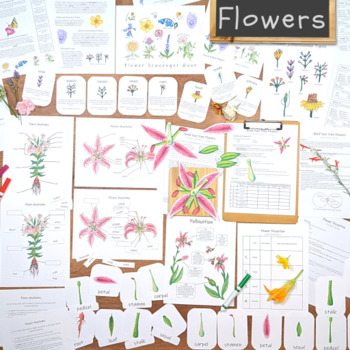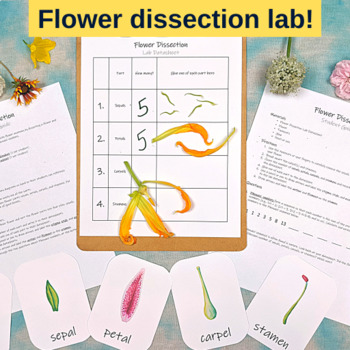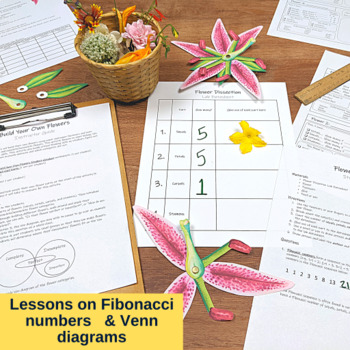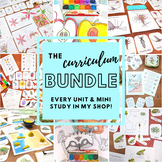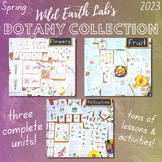Flower Unit: botany and floral anatomy curriculum & materials
- PDF
Also included in
- Simply EVERY unit in my shop, in one discounted bundle!→ This collection includes environmental science-inspired complete units and study materials.→ It is perfect for homeschooling, nature camps, STEM camps, and earth/environmental science classrooms.→ All the materials feature my artwork and are bPrice $229.00Original Price $307.00Save $78.00
- This botany collection bundles together three great plant science units! It includes my Flowers Unit, Pollination Unit, and Fruit Unit! This curriculum collection contains over 100 pages with dozens of activities covering plant biology topics including plant and floral anatomy, types of fruits, flowPrice $24.00Original Price $29.00Save $5.00
Description
Get ready for your new favorite botany unit! These unique flower materials bring plant science to your garden or classroom! This unit study focuses on common garden and wildflowers and includes indoor and outdoor activities, science for kids, anatomy diagrams, build-your-own flower model, three-part cards, and SO much more! This plant unit study is ideal for mixed-age group classrooms and homeschool.
*** Materials Included *** (32-page PDF file)
Introductory handouts and flower craft ideas
Plant anatomy diagrams w/ blank copies and reusable labels
Flower anatomy diagrams w/ blank copies and reusable labels
Flower parts three-part cards
Pollination steps classroom poster
Flower inflorescence types poster
Flower inflorescence types flashcards
Flower dissection activity handouts
Build your own flowers activity handouts
Flower part cut-outs to build your own flower model
Flower hunt activity student handouts
Common garden flowers classroom poster
Flower scavenger hunt
Instructor activity guides and directions
*** Please note***
→ FOR PERSONAL/SINGLE CLASSROOM USE ONLY: These materials feature my original artwork and designs. Please do not resell, share, or alter these materials.
→ 1-sided printing on 8.5-inch by 11-inch paper is recommended. Larger paper may affect image quality.
→ Any props or non-paper toys in product photos are for staging purposes only and are not included in the purchase.
→ You are purchasing a PDF download, no physical items will be shipped.
→The activities in this pack should be completed with adult supervision. Outdoor activities may involve certain risks; do not complete the outdoor activities in unsafe areas or conditions (steep terrain, bad weather, etc.).
***Get in Touch***
Contact info and a few free samples of my work are available on my website!
WildEarthLab.com
Follow @wildearthlab on Instagram and Facebook for exclusive offers and behind-the-scenes previews of new learning resources!
I’m happy to answer your questions about this item - please don’t hesitate to reach out to me :)

